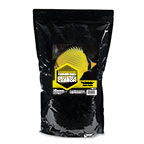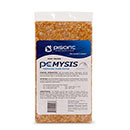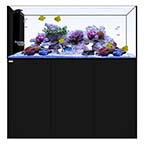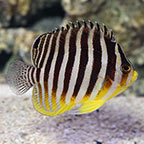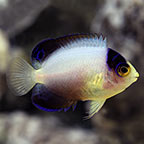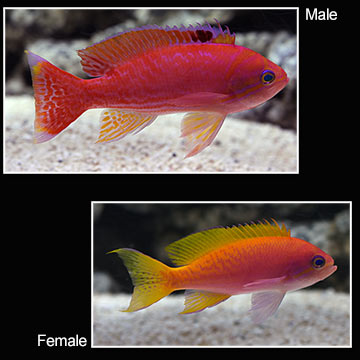
Additional locales and sizes may be available!
Additional locales and sizes may be available! Email me when availableQuick Stats
What do these Quick Stats mean? Click here for more information
What do these Quick Stats mean? Click here for more information
Overview
The Bimaculatus Anthias does best when kept with its own species in a tank of at least 125 gallons. A marine species, the Anthias dwells in the middle of a tank but appreciates the availability of several hiding places.
Anthias species all share the trait of being hermaphroditic. If a dominant male perishes, the largest female of the group will often morph to take its place.
Once acclimated to a new aquarium, Anthias do best when fed a varied diet of frozen mysis shrimp, enriched frozen brine shrimp, and over time may eat high-quality flake foods offered in small quantities throughout the day. An attached refugium cultivating copepods and amphipods provides a steady supply of nutritious live food sure to keep this active planktivore content.
Approximate Purchase Size: Small: 1" to 1-3/4"; Small/Medium: 1-3/4" to 2-1/2"; Medium: 2-1/2" to 3-1/4"; Medium/Large: 3-1/4" to 4"; Large: 4" to 5"




